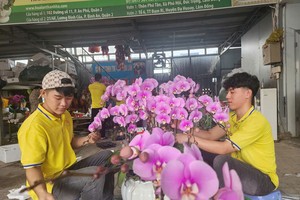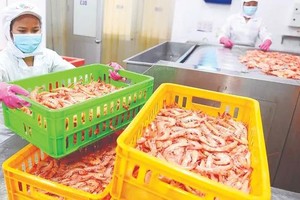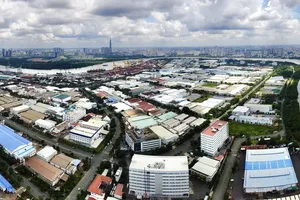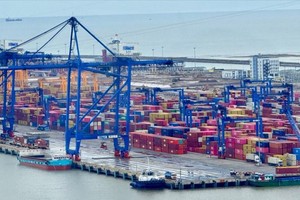According to the Binh Phuoc Cashew Association, the province has more than 134,000 hectares of cashew nuts with more than 100 enterprises and over 400 cashew processing and production facilities. Of these, there are 31 large enterprises with a total capacity of about 82,000 tons per year. Their products are exported to more than 30 countries and territories, creating regular jobs for about 50,000 workers. However, domestic cashew output has not been able to meet the production and processing demand for many years, so local cashew processing enterprises depend heavily on the supply of raw materials from Cambodia and African countries.
Mr. Dang Van Hau, the owner of Cong Hau cashew processing facility in Phuoc Minh Commune in Bu Gia Map District, said that this year, due to unfavorable weather, both Vietnam and Cambodia had a bad harvest of cashew, causing it difficult to buy raw materials. As for African cashew, large enterprises purchase and distribute in large volumes, leading to high prices when arriving at the processing facilities, even though the quality of African or Cambodian cashews is not as good as that of Binh Phuoc.
Similarly, Mr. Ta Ngoc Tuan, owner of Ngoc Tuan cashew processing facility in Phuoc Minh Commune, said that consumption contracts had been signed with partners, so prices could not be adjusted. Input materials were in short supply, so his facility had to compete with high prices. The facility would process what it could buy, and this year's production would possibly be interrupted. Cashews from African countries were being harvested and must go through distribution units, so it would take a long time for this supply of cashews to arrive in Vietnam. As a result, more than 50 workers in his facility would have to stop working.
Every year, his facility can process tens of tons of raw cashews per day, but now, when the cashew crop in Binh Phuoc Province is about to end, the facility can hardly buy Binh Phuoc cashews. There are only 2,000 tons of cashews imported from Cambodia in the warehouse, and shortly, the facility will have to suspend operations due to raw material shortage.
According to the Department of Agriculture and Rural Development of Binh Phuoc Province, cashew trees depend greatly on the weather. If the weather is favorable, the yield will be high. Meanwhile, in bad weather, such as unseasonal rain, heavy rain, hoarfrost, and prolonged hot sun, despite being fertilized, cashew trees cannot achieve high productivity. This year, the cashew crop in the province has a poor harvest, reaching only 50 percent of productivity compared to the same period last year. In the past ten years, there were 3-4 years of crop failure due to bad weather. The department recommends that farmers should not rush to cut down cashew trees to grow other crops because the weather is not always unfavorable. Besides, investing in other crops will take time and high investment costs.
To increase income per unit area, the department recommends that farmers should intercrop trees in the cashew growing areas, such as coffee, pepper, and cocoa, because when fertilizing and watering cashew trees, other trees will benefit together, and if the cashew crop fails, farmers still have another source of income.
























